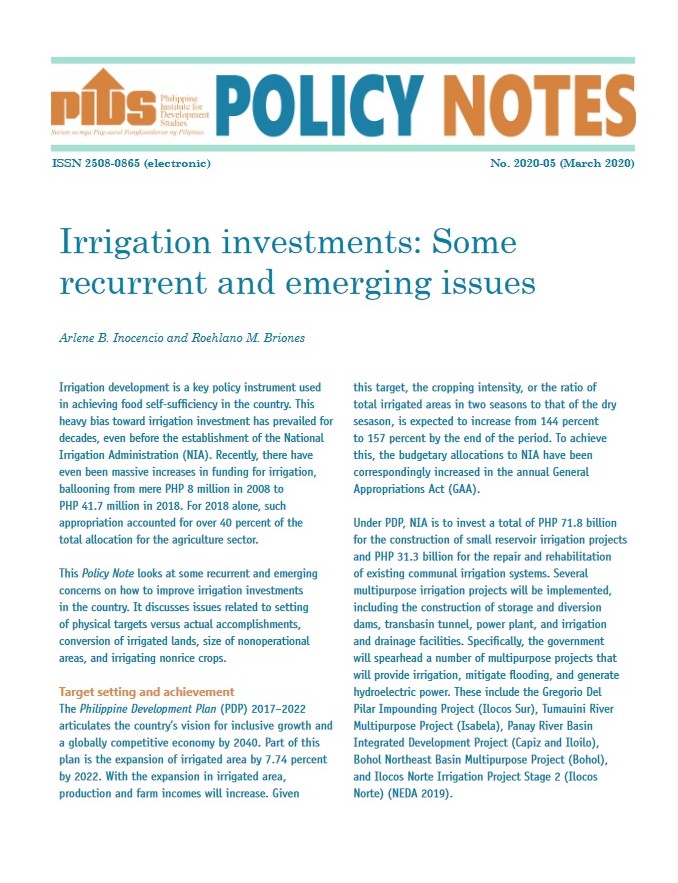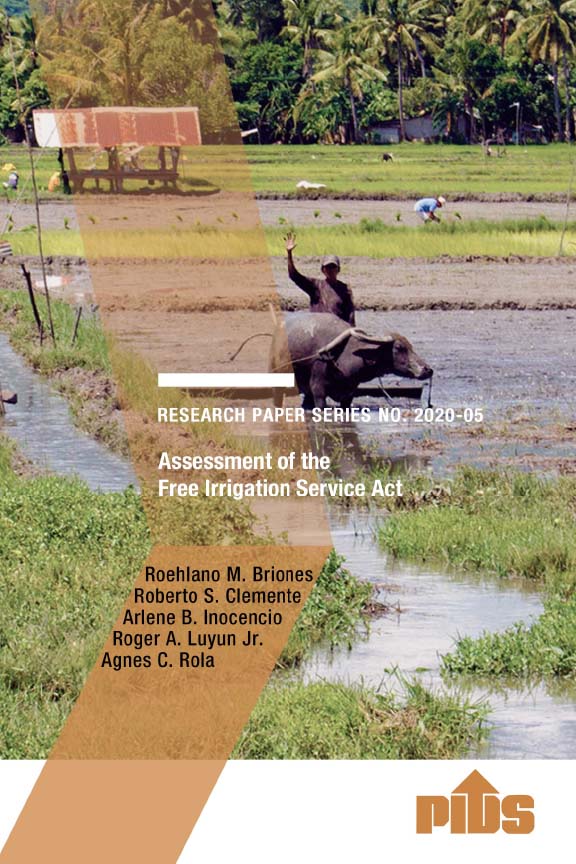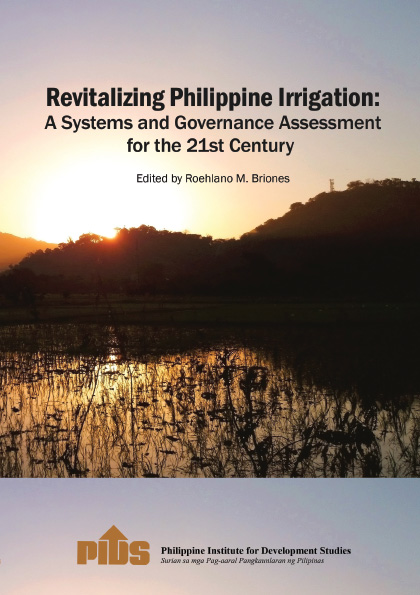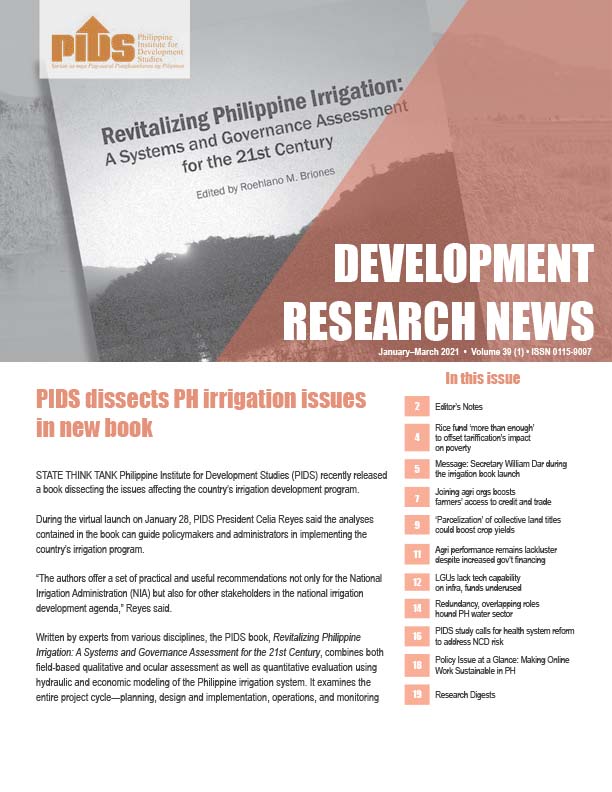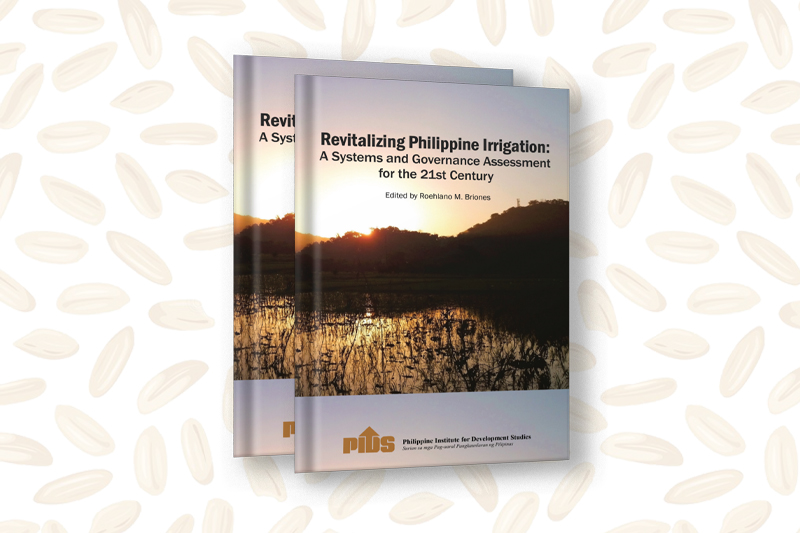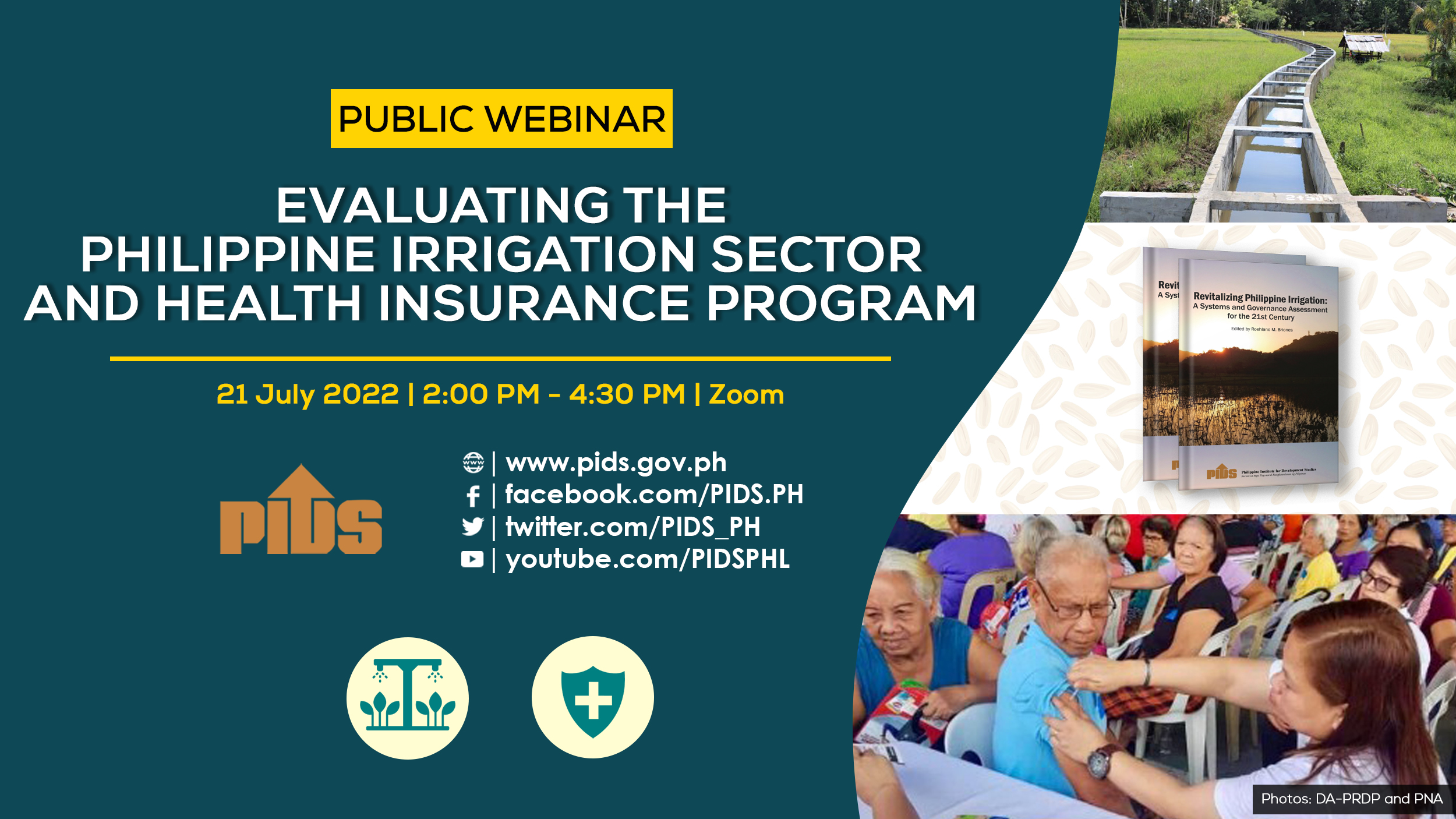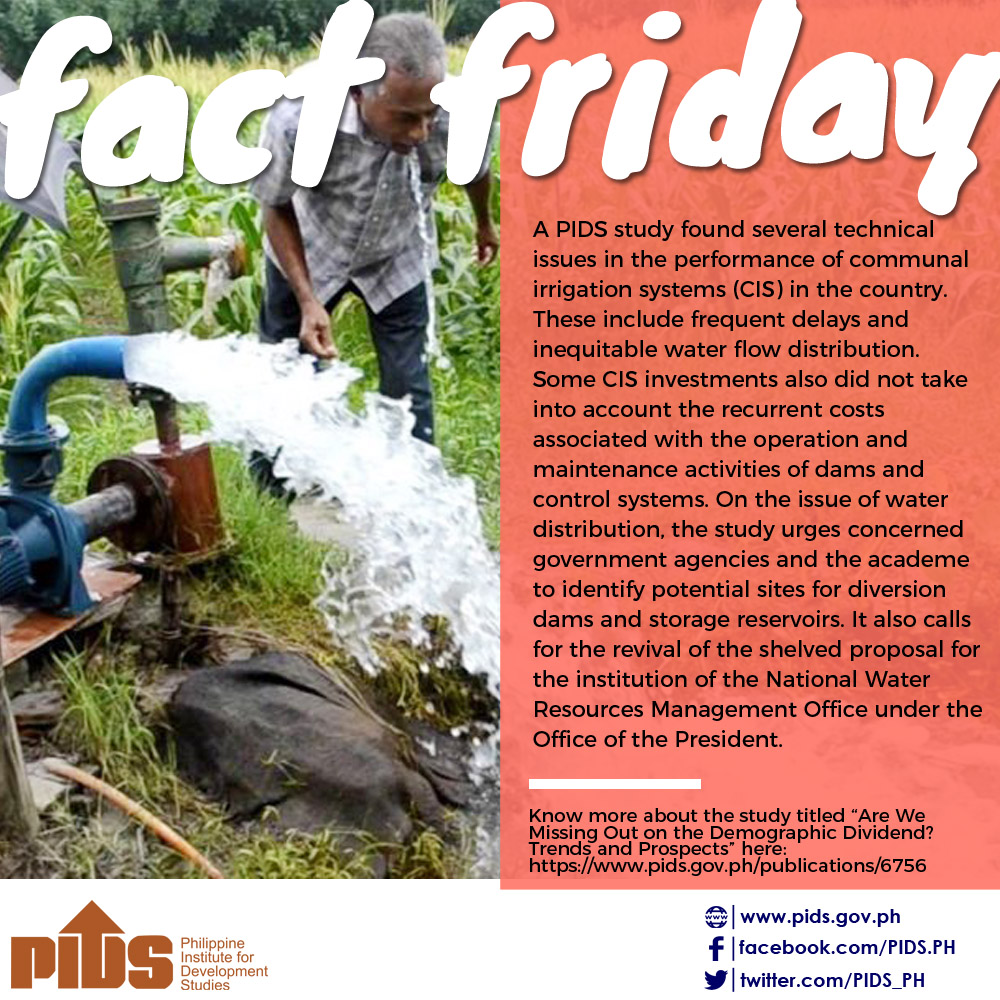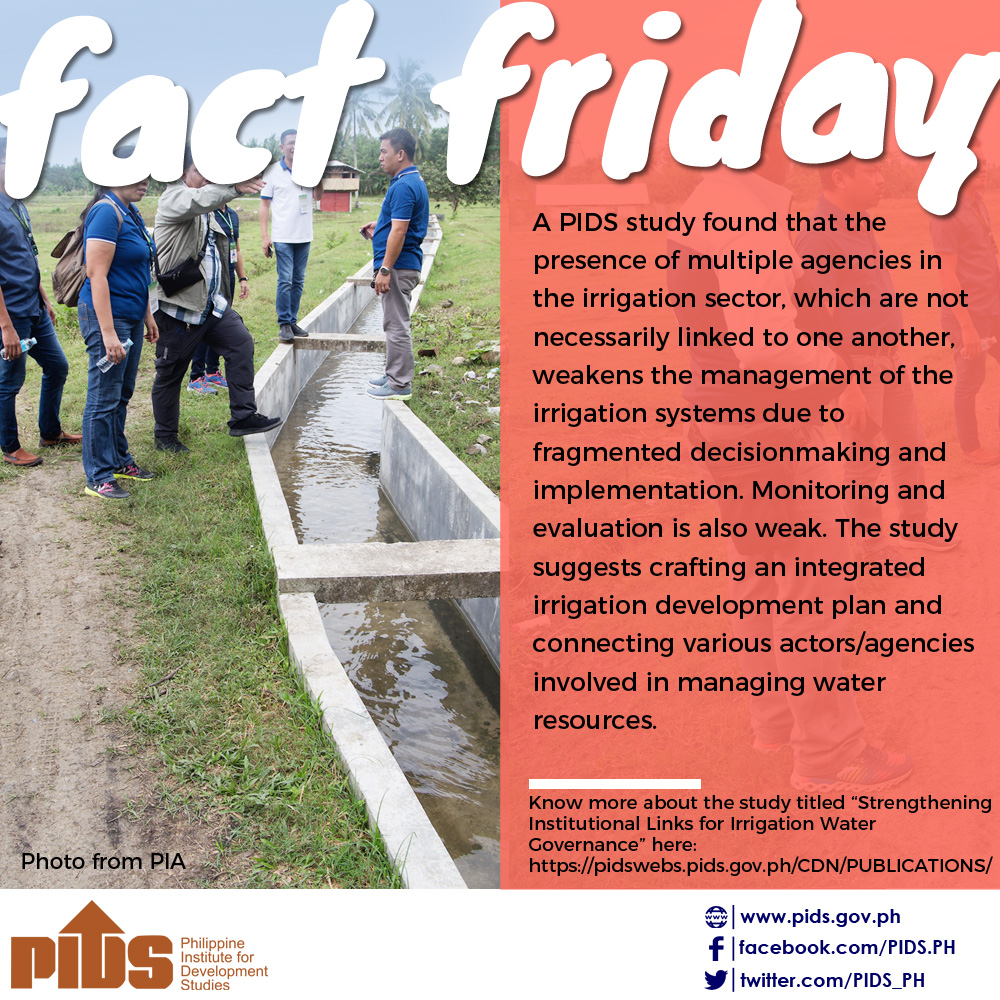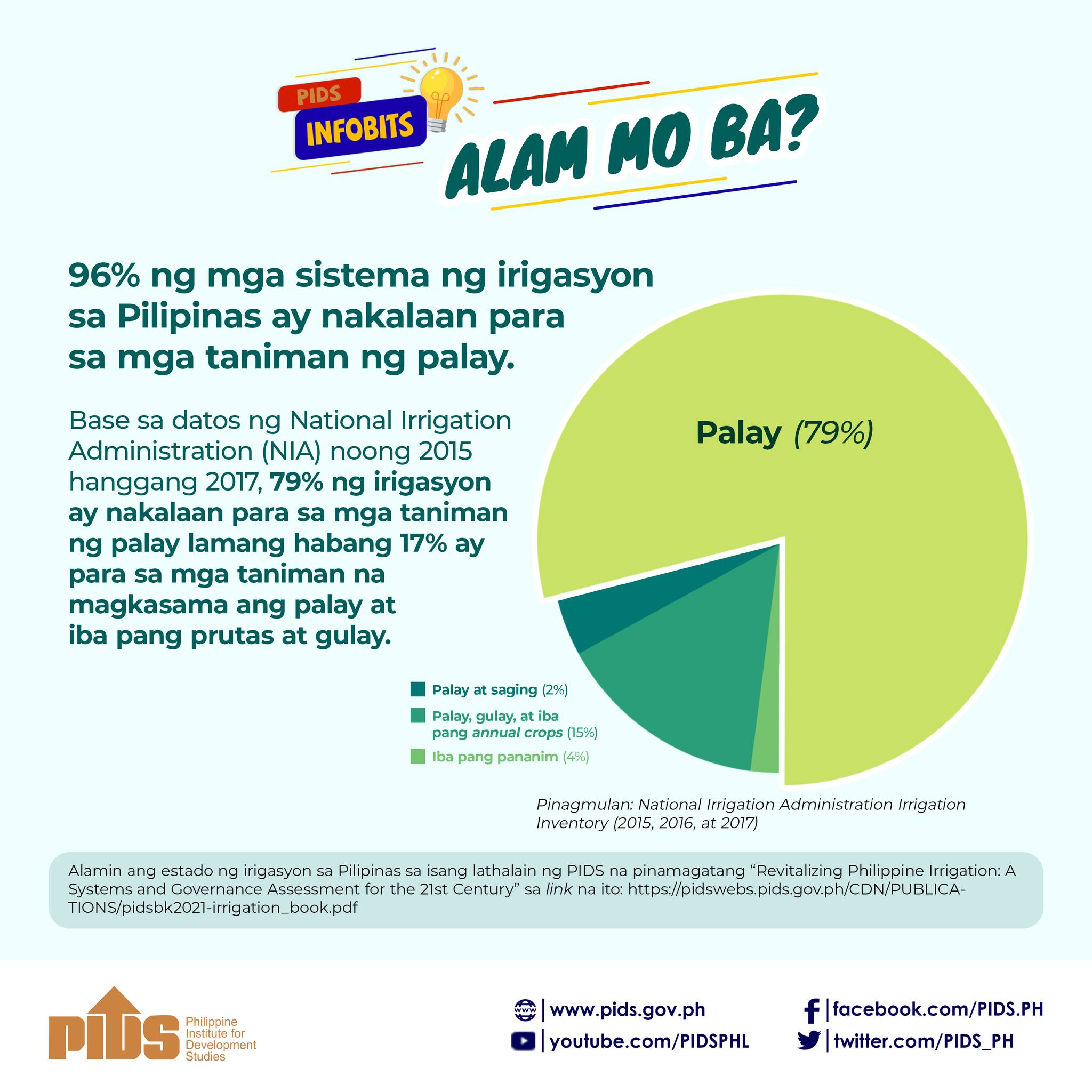Irrigation development is a key policy to achieve food self-sufficiency in the country. In recent years, the funding for irrigation ballooned, accounting for over 40 percent of the total allocation for the agriculture sector in 2018 alone. This Policy Note looks at some recurrent and emerging concerns on how to improve irrigation investments in the country. Among others, it finds that despite the increase in allocation, the National Irrigation Administration (NIA) has hardly met its annual physical targets for new area development. Among the reasons behind this are institutional, physical, and operational constraints faced by NIA. In particular, its targeting system appears to be weak as a result of the decline in human resources with needed expertise and experience to perform critical functions. Another cause of concern is the fast conversion of lands, rendering irrigation investments useless. To address these issues, the study calls for a clear understanding of the bottlenecks or limiting factors in achieving the target new areas. It also urges NIA to carefully assess land conversions to redirect investments to areas which are in actual need of irrigation. The study likewise suggests exploring the potential for irrigation investment to support the crop diversification program, given the rice tariffication and the increasing nonviability of rice areas.
Citations
This publication has been cited 1 time
- Ochave, Revin Mikhael. 2020. Gov’t missed irrigation targets despite higher funding — think tank. BusinessWorld.

